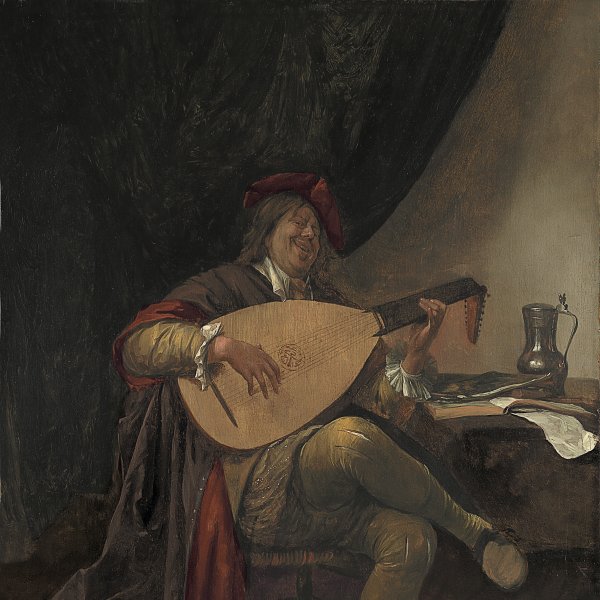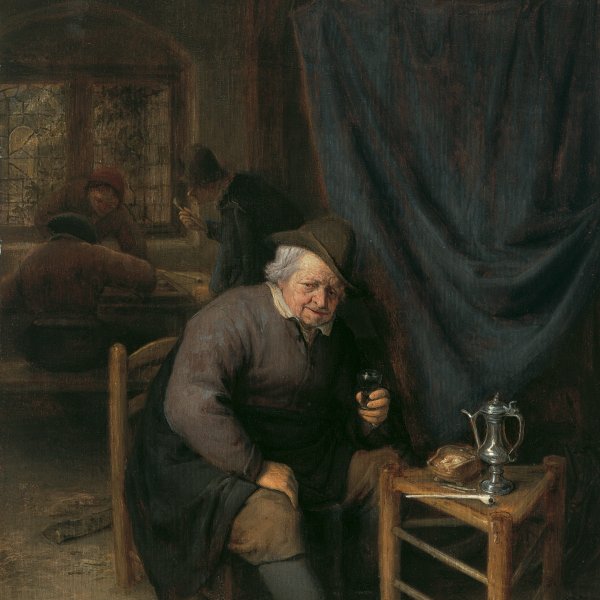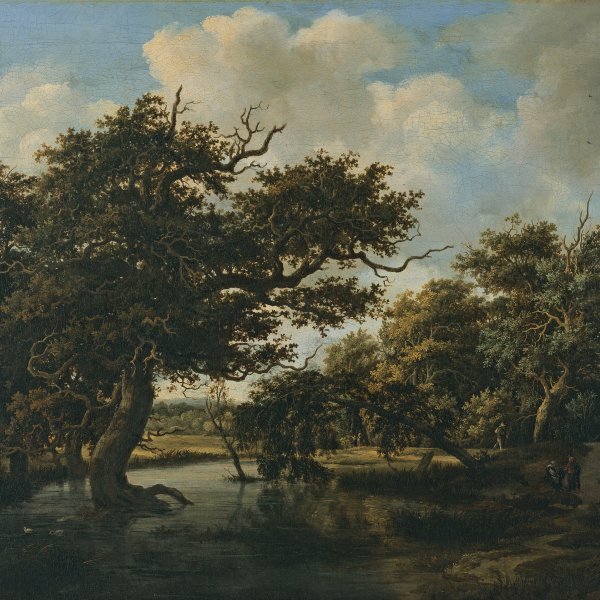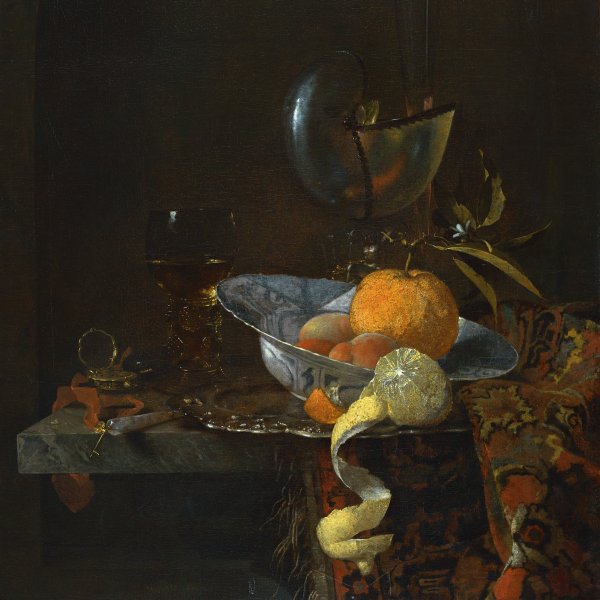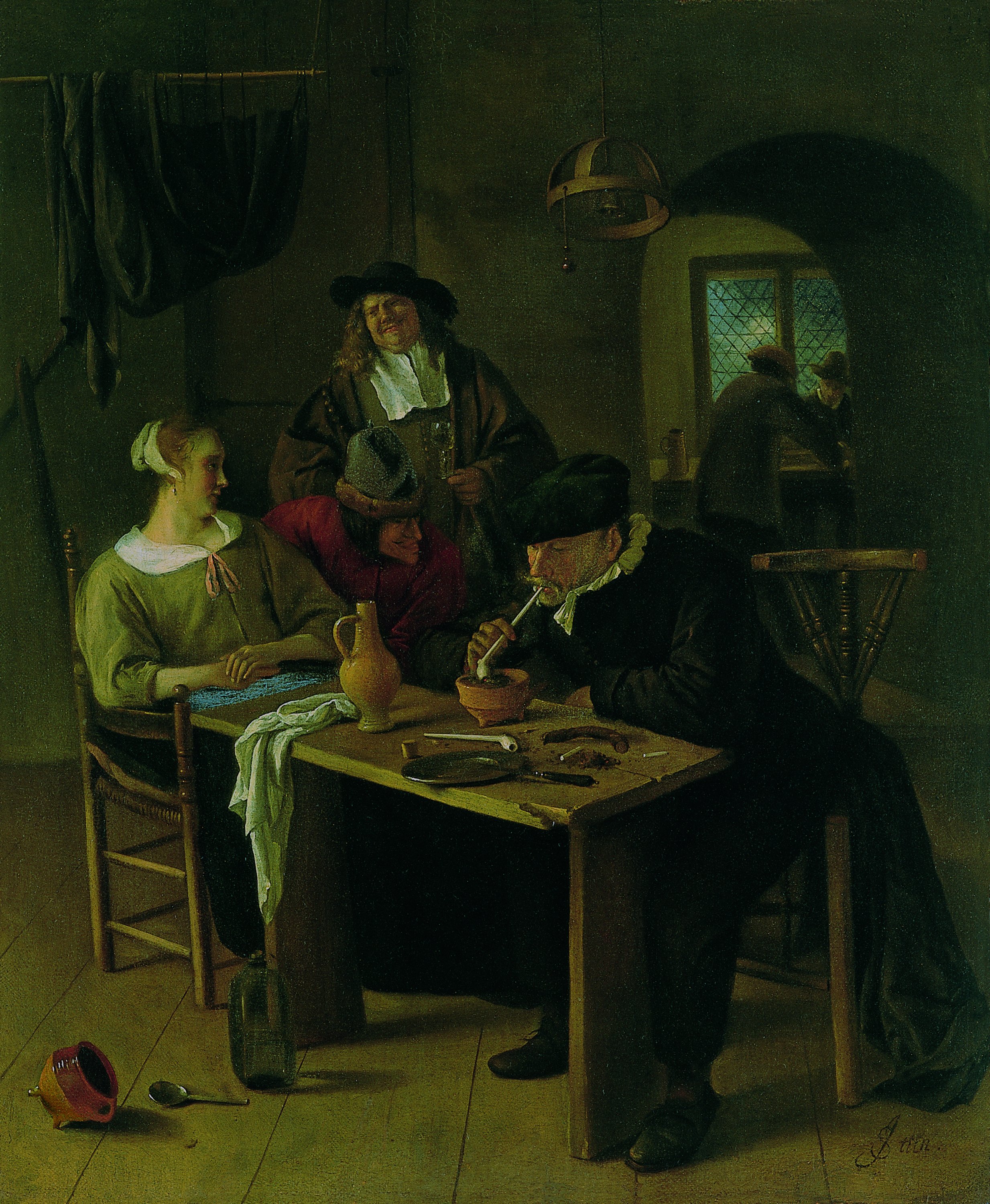Tavern Scene
Born into a wealthy family, Jan Steen was an educated subject-painter who specialised in popular light-hearted genre themes. His characters and compositions were strongly influenced by contemporary literature—particularly by the Commedia dell’arte— and his scenes from daily life often conveyed a moral message based on old Dutch proverbs or folktales. This tavern interior depicts the well-known story of a pregnant woman presented as a suitable marriage partner to a gullible old man by her crafty young lover. Like many other works by Steen, the painting includes a figure standing outside the story, as it were, looking on; he has been identified as the artist.
DD
There has been considerable confusion concerning the identification of this work in terms of both provenance and subject. It is not mentioned in the published edition of Hofstede de Groot's catalogue, although a work resembling it does occur in his annotated working copy in The Hague. The painting mentioned there, said to be on panel, has notably smaller dimensions than those of the present work, and conforms with the description of a painting sold anonymously in Amsterdam in 1907 regularly confused in provenances with the present canvas. Since the present work, even in its cropped state, is larger than the panel it is unlikely to be the same painting transferred to a canvas support. It is more likely that there are two versions, the panel remaining untraced. Consequently some of the references in the provenance above may be to the version on panel rather than to the present work. Furthermore, the present canvas has frequently been confused in published provenances with Steen's The Doctor's Visit in Philadelphia. In consequence it was incongruously described when with Duits by the same title, The Doctor's Visit.
Prior to 1945 the canvas was described correctly as a tavern interior. An explanation of the subject was tentatively offered in the exhibition catalogues of 1959-1960. Many of Steen's works are based on dramatic, proverbial or folktale stereotypes concerning the comedy of love and its associated follies. This canvas appears to depict a variation of the story of the pregnant woman who is presented as a suitable marriage partner to a gullible elderly man by her crafty young lover acting as pander. The intended victim, lighting his pipe, wears an anachronistic costume similar to that worn by the stock character of the aged lover in other paintings by Steen. This figure is related to the character of Pantalone from the Commedia dell'Arte, whose performances, as Gudlaugsson has demonstrated, were a constant source of visual inspiration for Steen. To emphasise the point, which the elderly man's detachment might otherwise seem to undermine, the pander wears a paternity bonnet, the special hat worn by a father only during and after a confinement. The cuckolded "father" wears the same headgear in Steen's Christening Feast in the Wallace Collection. The young man in the present work is depicted with particularly pointed facial features which, it has been suggested, may allude to the Dutch proverb "Een spitse neus, een spitse kin, daar zit Sinjeur de Duivel in" (a pointed nose and a pointed chin, Monsieur the devil sits within). In this respect he can be compared with procuresses in several of Steen's brothel scenes, such as Easy Come, Easy Go, in Rotterdam. Behind the main trio stands a broadly smiling man holding a glass who is depicted with the painter's own features. Steen regularly included in his works such a figure, whose humorous gaze usually meets that of the spectator and serves as an implicit commentator on or presenter of the scene. Examination by means of infra-red reflectography reveals that the girl's head was originally depicted directing her gaze towards this standing man, though the alteration was effected by the artist himself. In the background two men are playing backgammon. Although probably a circumstantial detail, it may allude to nefarious activities, for the game was often included by Steen in scenes involving sexual adventures, such as his canvas known as Two kinds of games in Amsterdam.
The present work was probably executed after Steen's move from Warmond, near Leyden, to Haarlem where he was by 1661. This treatment of figures in an interior in which one of them remains aloof and visually dominant is also to be seen in Steen's Solitary Drinker in Northampton (MA). Such paintings were probably Steen's response to work being produced in Haarlem at that time by Adriaen van Ostade, for example his Tavern Interior in Madrid, Museo Thyssen-Bornemisza, dated 1661. The present canvas was most likely produced during the period immediately after that date.
Ivan Gaskell





